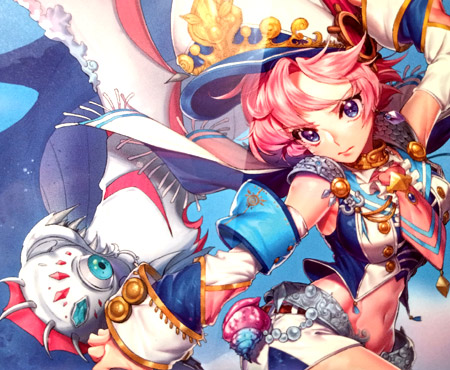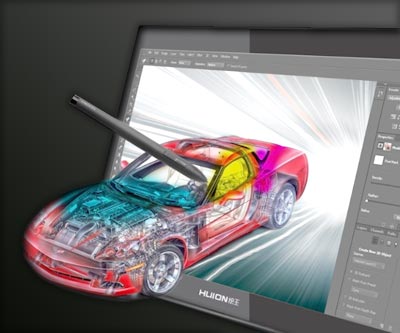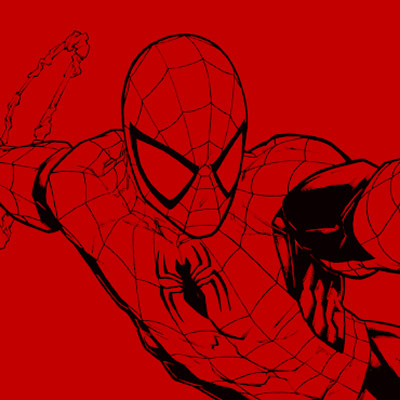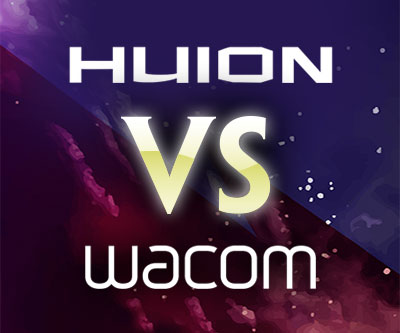
Although there are several Adobe Illustrator alternatives out there, no other software is as reliable and intuitive.
In case you simply need to vectorize an image, there’s a plethora of options, both free and paid. Just remember that even though you will be able to create professional work with them, they’re nowhere near as comfortable to work with as Illustrator.
Another thing to keep in mind is that the job market requires you to master Illustrator, so you must make that your priority. Do not get in the habit of using similar software because they will be virtually useless if you decide to work in the industry in the future.
That being said, let’s get to the list of Adobe Illustrator alternatives:
Inkscape
This is, without a doubt, the closest software you will find to Adobe Illustrator. It has virtually all the same tools and although the workflow is a little bit different, the learning curve isn’t too steep.
In case you’re well-versed in Adobe Illustrator, all it takes is a couple of days using Inkscape before you’re able to execute nearly every single task that you would in Illustrator.
At first, Inkscape might look like a cheap software that was put together without much care, but this couldn’t be further from the truth. If you give it enough time, you will realize that even those features that are not obviously located on the left-hand bar like in Adobe Illustrator can be found as long as you have enough patience to look for them.
Inkscape is my go-to software whenever, for some reason, I’m unable to use a licensed copy of Adobe Illustrator.
As I’ve mentioned at the beginning of this article, Adobe Illustrator should be your priority when in comes to vector illustrations and graphics. You have to master it if you want to work professionally in the design industry.
However, if there’s one other skill that would be nice to have for someone who deals with vectors for a living, being able to work with Inkscape is definitely it.
Positive aspects of Inkscape
Robust set of tools
After Adobe Illustrator, Inkscape is, without a shadow of a doubt, the software that offers the most comprehensive set of tools. What makes it different from most other programs is that Inkscape was made specifically for the creation and manipulation of vectors. This is its primary function.
Professional file formats
Inkscape files can be saved in SVG format, which is the standard vector format used by most applications.
While it’s true that well save our files in Adobe Illustrator’s native extension, “.ai”, other applications outside of the Adobe suite almost uniquely work with “.svg”.
Perhaps this is one of the few advantages that Inkscape has in relation to Illustrator. While Adobe tries to keep its files congruent within its own suite, Inkscape tries to make sure that its files work perfectly fine with other programs that are completely unrelated to Inkscape.
In case you’ve been working as a designer for a while, you must have noticed that “.ai” files usually lose some of their characteristics, either specific colors, shapes or shades once they’re saved in “.svg” format. It’s incredibly frustrating to work on a piece for a few hours only to find out that the final result will be significantly altered once the file is saved in “.svg”.
Price
It’s completely free.
I hardly ever come across a software that is free and at the same time is good enough to be used in a professional environment. While it wouldn’t be reasonable to expect Inkscape to be better than its more famous (and paid) counterpart Adobe Illustrator, it does a very good job emulating one of Adobe’s gems, which Illustrator is known as.
Industry standards
Unfortunately, a substantial amount of programs with immeasurable potential end up being abandoned due to the fact that the lack of financial resources lead to their inevitable failure.
Developers are builders and therefore are always trying to create something new and exciting. The thing is, once that feeling of novelty dissipates, many projects end up being forgotten. The reason for this is that once a project starts taking up time, but is not generating any revenue, people become much less likely to work on them.
Luckily for artists and designers like you and me, Inkscape is constantly updated and there’s an actual desire by its developers to keep the software relevant in this ever-changing world we live in.
Whenever there are new concepts, tools and ideas emerging in the vector design industry, Inkscape is fast to integrate those attributes.
Even though it may take a little while for changes to take place within Inkscape’s interface, they always happen, you just need to have a little bit of patience.
Negative aspects of Inkscape
It’s not Adobe Illustrator
That’s right! No matter how much developers work, no matter how much sweat and tears are poured into creating better versions of Inkscape, it is not Adobe Illustrator and it will never be.
Inkscape interface simply isn’t as intuitive and its tool-belt, although impressive, still lags behind Illustrator’s.
You need to understand that Inkscape isn’t a perfect substitute for Adobe Illustrator, but a software you should learn how to use whenever an emergency arises and you need to get work done.
Most design studios don’t use it
If you want to work as a designer, even if vector art won’t be your primary occupation, learn how to work with Adobe Illustrator because no reputable studio in the world uses Inkscape as their standard software.
When you go through an interview process and a company asks you to take a test to prove your ability, expect to be asked to perform all the tasks in Adobe Illustrator.
Like I’ve mentioned before, mastering Inkscape can differentiate you from the thousands of designers out there, but knowing how to work with Adobe Illustrator is what truly matters.
First master Illustrator, improve your workflow, learn how to work faster,only then spend your time getting better at using Inkscape.
Mastering Inkscape doesn’t do much for your career
Have you noticed how I was very specific when I said that it doesn’t do “much”?
All I’m saying is that Inkscape does have a certain importance and it is nice to know how to use it, but it’s just something an employer would use to make a decision between two candidates of equal ability.
If you’re applying to a job against someone with the same skills as you, but you happen to know how to work with Inkscape as well while the other guy can’t, this could definitely be a deciding factor that gets you hired.
It has limitations
Inkscape does have the main tools found in Illustrator. Everything you need in order to perform essential tasks is basically there.
Now, for those who are experts in Adobe Illustrator and use more obscure tools and resources, Inkscape may feel incomplete.
Since 99% of my work simply depends on the pen tool, I don’t feel like I’m missing out on much while working with Inkscape.
That being said, sometimes clients have very specific demands that require some tools that Inkscape lacks. This is one of the reasons why I believe design studios tend to stay away from it.
It can be slow at times
Adobe Illustrator can handle multiple files at once quite well. Although it can get a little slow in case the user open dozens of windows with dozens on objects in each one of them, most of the times the software is highly reliable and hardly ever crashes.
The same can’t be said about Inkscape. Although it’s true that its speed has improved over the last few years, its performance isn’t at the same level seen in Illustrator.
Of course that we must take into consideration that Adobe has a massive amount of incredibly talented developers working on its products and that they’re extremely well paid. More often than not pouring money into a product tends to yield good results over time.
On top of that, it wouldn’t be really fair to expect that a free software had a substantially better performance than another one that is its market leader.
All things considered, Inkscape performance is still good if you don’t abuse it by creating hundreds of objects inside the same project or by opening dozens of windows at the same time.
Conclusion about Inkscape
If for some reason you cannot use Adobe Illustrator, Inkscape is your best alternative. No other free software comes even close to it.
Corel Draw

Most people would be quick to say that Corel Draw should be the first software of the list since it’s the one that more closely resembles Adobe Illustrator.
I understand that.
It’s true that Corel Draw has a lot more resources than Inkscape and that it’s perfectly able to handle professional work almost as well as Illustrator despite not being as popular as Adobe’s product.
The reason why I decided to put Corel Draw on the second place of this list is that it’s also a paid software. If you were looking for a paid software, you would most likely have opted for Illustrator instead of trying to find similar programs.
The reason why I’m not the biggest fan of Corel Draw is that I simply cannot find a good reason to choose it over the more commonly used Illustrator.
While I was growing up, everyone used Corel Draw and for a certain period it certainly felt like it would be the main vector design software forever. Well, things change and markets evolve. Over the years Adobe has managed to conquer huge pieces of the design market until it became its leader.
Nowadays plenty of people still use Corel Draw, but most of them do so out of habit. They simply learned how to use Corel’s tools back in the day and now avoid moving to the Adobe suite, even though it’s obviously better.
Why should you go for Corel Draw?
Some studios still use it
As I’ve stated at the beginning of this article, most design studios use Adobe Illustrator, but there are some, far and between, that have a preference for Corel Draw.
This usually happens because the studio was established many years ago and back in the day Corel has the largest part of the market. There’s a lot of older/more experienced designers who have learned how to design by using Corel Draw and some of them have kept that preference over the years.
If the owner of a studio likes working with Corel Draw, chances are you’re also going ot have to learn how to use it.
It has a trial period just like Adobe Illustrator
When I was talking about Inkscape I mentioned that you could use it in emergencies, right?
In case something goes wrong with your Illustrator license, you can always download Inkscape and start working right away.
That being said, Corel Draw is indeed a more powerful software than Inkscape and you can still use it for a limited time without having to spend a single cent.
Let me give you an example: let’s suppose something went wrong with your Adobe Illustrator license and the customer support simply can’t help you immediately. Time is running out and you have to meet a deadline.
There’s nothing wrong about downloading Corel Draw and using it for a single project. Just during this emergency.
Now, it’s up to you to decide whether Corel Draw or Inkscape will be the best tool to deal with unexpected situations. You should try both of them as soon as you can in order to find out wchich one you should go to whenever the need arises.
I personally have a preference for Corel Draw because I’ve used it more than Inkscape, but do not let my opinion steer you ini a certain direction. Play with both of them for a few hours and decide for yourself which software is going to be part of your “plan B” shall Adobe Illustrator crash unexpectedly.
Positive aspects of Corel Draw
It’s a professional software
Even though Corel Draw is not as popular as Adobe Illustrator, it’s still the second most important vector design tool currently available.
While it’s true that Inkscape has been gaining a lot of traction, the main motor behind its soaring popularity is the fact that it’s entirely free.
In case we were to compare, price aside, the capabilities of Inkscape and Corel Draw it would be crystal clear that Corel Draw has the edge.
One of the reasons why I didn’t place it in the second spot of this list is that if you were to pay for anything, it would be much more logical to go for Adobe Illustrator.
It’s intuitive
Although its workflow is substantially different from that of Adobe Illustrator, Corel Draw still is much easier to use than Inkscape if you take into consideration the amount of tools that it offers.
For someone who has worked with vector graphics before, moving from Illustrator to Corel Draw should be as simple as watching a couple of tutorials online.
The only thing that I find confusing is that although most tools found in Illustrator and Corel Draw are extremely similar (some of them even have the same names), they actually behave slightly different.
In fact, you will notice this kind of behavior across many different vector-based programs. These minor differences become even more noticeable once you use tools that you’re deeply used to, like the pen tool. At first everything looks the same, but once you start clicking and moving the mouse around you will realize that these programs were definitely coded by different teams.
It still has some importance
Like I’ve mentioned before, knowing how to work with Inkscape may be taken into consideration if two candidates for a job position have the exact same set of skills and the employer starts looking for a way to choose who should be hired. Inkscape could be that detail that makes the scale tip you way.
When it comes to Corel Draw things are a little different. This is not simply a software that is “nice to master”. It really has some weight on employers’ decisions, particularly when they belong to an older generation of designers.
Corel Draw was once the most important vetor-based software in the world nd people who were working at that time still remember it. So even if they don’t consciously think that knowing how to use Corel Draw is necessary, they will intuitively think of you as someone who knows the industry from a deeper level.
Negative aspects of Corel Draw
Price
Just like it happens with any large software company, Corel’s products are not particularly affordable. Developing software requires software engineers, scientists, testers and so on. This is an extremely expensive business, you could also add all of the maintenance work, research, development and customer support to that.
It would be unreasonable to expect Corel to give away its products for free.
The thing is, since you would have to spend a considerable amount of money to get Corel Draw, why not spend a little bit more and actually get the industry leading software?
If you are planning on getting a job in the design industry, there’s no question, you’d better get Illustrator sooner than later. And even if your vector-design aspirations are restricted to your home and you have no interest to join the workforce, Illustrator would still be the way to go because it has a lot more text and video-based tutorials readily available.
Your time could be better spend elsewhere
Mastering Corel Draw can be an impressive skill in the eyes of some experienced designers, but at the end of the day, it’s the work that you do, regardless of which software you use, that determines how much you’re going to earn as a designer or as an artist in general.
You really only need to master Illustrator because that’s the basic tool to get your job done. Apart from that, your time will always be better spent by dedicating it to learning design principles and techniques. These skills are the ones that will help you to become a known person within your field of expertise.
Affinity Designer

Some say that this is the fastest vector design software ever created. It may not have as many tools as Illustrator or Corel Draw, but the tools it does have tend to work incredibly well.
If you’re someone who enjoys working with a minimalist approach and avoid using textures and special effects in your illustrations, Affinity Designer is perhaps the greatest option apart from Adobe Illustrator.
It’s easy to install, it runs on virtually any computer and it’s truly a joy to work with.
I feel like multiple designers decided to sit together and come up with a straight-forward solution to their basic design needs. This must have been the inception of this software because that’s exactly what it does.
Since nothing is perfect, all this speed comes with a price. Affinity Designer’s tool-belt is less resourceful than the one found in Illustrator and Corel Draw.
Positive aspects of Affinity Designer
Lighting-fast processing
If you’re impatient and likes simple designs, Affinity Designer may be even faster than Illustrator.
Vector art used to be all about simplicity. People were able to create amazing artwork simply by using simple shapes and solid colors, even gradients used to be frowned upon.
Things have changed and since we, designers and artists, like to push the envelope, vector illustrations became increasingly more complex.
Nowadays, multi-color gradients and layers with different levels of opacity are a common occurrence and possibly even the main trend in the industry.
That being said, I still hold the opinion that a great designer must be able to communicate ideas and complex concepts through simple shapes and colors. Everyone should first learn how to do that before using all those effects that, more often than not, are used as a means to hide a designer’s lack of ability and perspective.
Easy to use
Affinity Designer is supposed to be fast and simple. And, to be honest, it’s both of these things.
This software’s workflow is highly intuitive and even someone who’s not that experienced with vector art will find easy to work with it given a certain amount of practice (especially with the pen tool).
One of the aspects that makes vector art seem a little intimidating at first is the fact that there are way too many tools to distract the user. This is where this software has an edge over the others. The tools are positioned in a manner that is straight-forward and intuitive, which equals to a great user-experience.
Runs on any basic computer
Illustrator requires a decent machine to work on. If you try installing it on an old computer, especially these new versions that are particularly heavy, you run the risk of having the software crashing every few minutes.
Affinity Designer runs smoothly even on less-than-desirable computers and laptops. And I think that this is one of its strongest characteristics.
A very common mistake that software developers make is to take the leading program on a certain industry and copy it entirely to try to sell it for a lower price. This never works. Adobe Illustrator can’t be beat at its own game. The people that created Affinity Designer know this and they were quite smart when creating their own software because they didn’t aim at copying Illustrator, but at creating something else that could help designers in a different way.
While Illustrator is heavy and fancy, Affinity Designer is fast and simple.
Negative aspects of Affinity Designer
Not recognized as a professional software
Most designers and, more importantly, most studios aren’t even aware of Affinity Designer’s existence. If you plan on working for yourself, this doesn’t make any difference, but if you would like to find a job, nobody really cares if you know how to use this software.
In fact, I believe that you shouldn’t even waste space in your resume to mention it. As I’m sure you know, the resume is a document where you should display only the most relevant information to the job position you wish to fulfill. And I can’t really think of any instance where mastering Affinity Designer would be deemed highly relevant.
Doesn’t have many tools
This one depends on interpretation.
For me, as a traditional designer, having basic tools that work well is more than enough to get my tasks done. However, I must also point that many employers require their designers to have a deep understanding of the whole toolbox of the software they’re working with.
Let me give you an example: I never, ever use Illustrator’s 3D tools. I don’t like them and I prefer to do everything by hand, even supposedly 3D looking designs.
However, it’s very likely that your future employer will demand that you are capable of using these tools because even though they don’t generate as good-looking results as traditional methods, they’re much faster.
Once you’re working in a fast-paced environment, inspiration is a secondary worry. What people really value is your ability to produce quality work as fast as possible, even if that work is not particularly inspiring.
There are no tutorials online
You will find countless tutorials on Illustrator, a lot of tutorials on Corel Draw and some on Inkscape, but you wont find tutorials about Affinity Designer. Perhaps this will improve over time and within the next few years there will be a huge collection of information on how to use Affinity Designer’s tools, but we don’t know that yet.
Since we live in the present and you may need a tutorial at any given moment, you may not be able to find one if you work exclusively with Affinity Designer.
Conclusion
There’s a huge number of vector design software out there, but most of them will only take space in your computer without adding any value to your design tool-belt.
Inkscape, Corel Draw and Affinity Designer are currently the only options other than Adobe Illustrator that allow you to do work on consistent basis.
I understand that you may feel tempted to try one or more of the dozens of cheap (and I mean cheap as in poor quality) vector programs out there, but you will only spend your time. Stick to what works.
If you feel the need to experiment, these three options I’ve mentioned above are more than enough to keep you busy for a considerable amount of time. Be smart about how you spend your waking-hours and concentrate your learning sessions to software that you can actually use to build your name in the design industry.
Take care and keep on creating,
Bruno







Thank you bruno,
I was torn between Inkscape and Affinity Designer but chosed to start vector drawing on Affinity Designer because of it’s ease of use to learn the basics quicker and with more enjoyment due to the better designed interface.
Also even if it’s not free, it’s quite cheap : 25 € during a sale 🙂
Hi, Thomas!
Great choice. Affinity Designer is super user-friendly, especially when it comes to illustrations.
Over the years I noticed that paying for good software is one of the best investments an artist can make. I’m sure you will
enjoy your journey learning vector art, it’s my favorite medium.
Have a wonderful day and thanks for reading =)